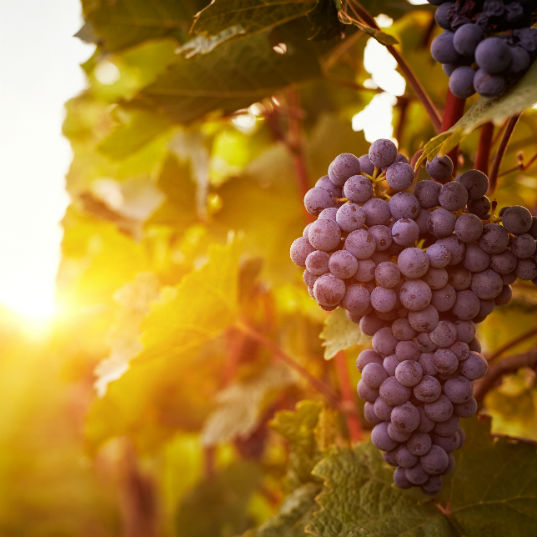Why are there winegrowers buying farmlands at high latitudes, where it is impossible to grow grapes today? Will historical vintage areas disappear and new environments for wine production emerge? Can grapes be an indicator of climate change?
These are some of the issues that in recent years have been closely relating the wine industry and global warming. The indigenous flora of the different regions is suffering the impact of climate change in the same way that it affects animal species, including humans.
The best vintages usually arise during the seasons in which springs are very rainy and summers are warm, since this accelerates the ripening of the grape allowing early wines of quality to be obtained. However, changes in the atmospheric conditions and the gradual rise in temperatures are causing alterations in the vineyards which affect the production of wine.
Advancement in harvests due to rising temperatures

It is estimated that for each degree Celsius that the average temperature rises the harvest is anticipated about a week. Thus there are some cases in which the harvests have anticipated almost one month compared to twenty-five years ago. These cycle changes cause some Designation of Origin grapes to ripen badly and result in the loss of quality in the resulting wines.
Another problem climate change brings involves is the lack of rain. The winters are drier and more benign than in the past and there are late frosts that devastate the vineyards.
Emergence of new crop areas
Besides, and as a result of global increase in temperatures, cold areas where it used to be unthinkable to plant vineyards or produce high quality wines are now being cultivated for higher alcohol content wines with an excellent quality. It is for this reason that many producers are acquiring lands located to the north of their traditional zones of origin.
This way, territories of northern latitudes have entered with force in the oenologist market. Norway, Denmark or the United Kingdom are three examples of countries where wine production is already growing at a rate of over 40% a year.
The impact of climate change on wine is another case of alteration of natural resources that is negatively affecting an economic sector that in many places is of special relevance.
Sources: Investigación y Ciencia, 20 Minutos, Neiker Tecnalia, eldiario.es, Gilbert & Gaillard, Eco Inteligencia, Omicrono, El vino y el clima (documentary video) and Nature Climate Change.